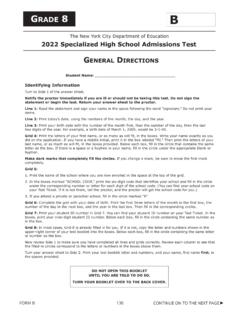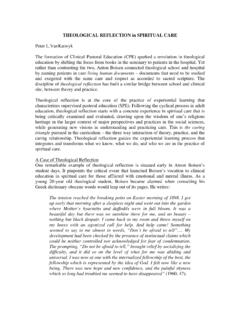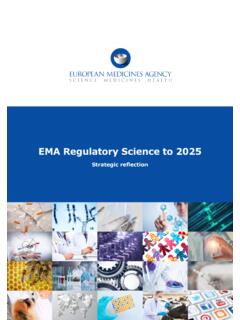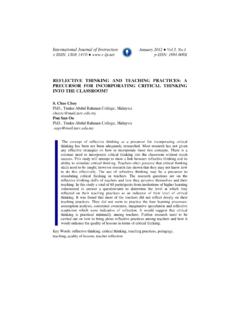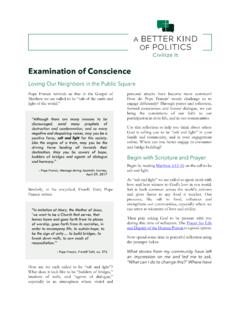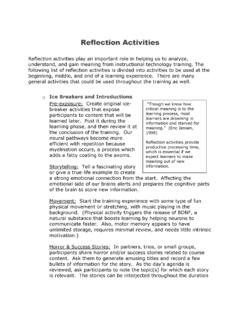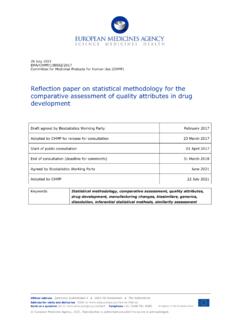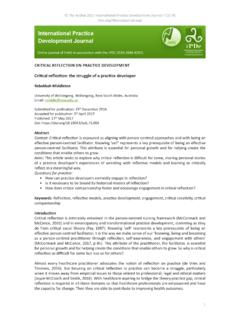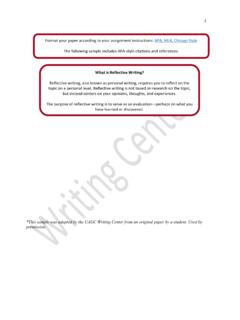Transcription of Bridge to School Plan
1 Mayor Bill de Blasio Chancellor Meisha Porter Senior Deputy Chancellor Marisol Rosales Deputy Chancellor LaShawn Robinson Table of Contents Letter from the First Lady of New York City 4 Introduction and Overview 5 Proactive Family Communication and Engagement 7 1. Initiate Proactive Communication to Assess Student Social-Emotional and Mental Wellness 7 2. Develop a Communications Plan 7 Social-Emotional Learning and Wellness 9 Strengthening Community 9 Fostering Resilience 9 Special Considerations 10 Adult Social-Emotional Learning (SEL) Activities 13 Adult Community Building and Resilience Activities 13 Section I: Early Childhood 15 Section II: K - 5 19 Section III: Middle School 22 Section IV: High School 25 Stakeholder Engagement 28 Looking Ahead 31 Resources to Support Ongoing Work: Early Childhood 31 Resources to Support Ongoing Work: K-12 32 Resources to Support Ongoing Work.
2 SEL for Families 33 Trauma Responsive Educational Practices Resources 35 TREP Mindful Self-Care 37 Focus on Creating Consistency & Predictability 38 Plan Calming Supports 39 COVID-19 Psychoeducation Resources 43 Talking with Children about Interpersonal Traumas 45 Principles for How to Respond When Students Disclose 47 Non-Clinical Tier 2 Supports that Can Be Implemented in the Classroom 48 Preparing All Staff to Implement Effective Tier 2 Interventions 52 Staffing Inventory 53 Letter from the First Lady of New York City Dear Colleagues, Two years ago, when we brought social and emotional learning and restorative justice to every New York City School , we did so to educate the whole child.
3 When our children enter the classroom, they have more on their minds than math or science. Preparing our young people for success means helping them deal with the social, emotional, and academic challenges of their lives. It means teaching them ways to process their many emotions, and showing them how to build healthy relationships and resolve conflicts in a constructive way. That is how we help them flourish into happy, healthy adults. During the COVID-19 pandemic, that mission has become more important than ever. Although some students may be upbeat and joyful, others may struggle with feelings of anger or frustration.
4 Our youngest spent months isolated from their friends and away from social activities. Our high schoolers have had their routines disrupted, and witnessed a national reckoning with racial injustice. And sadly, many of our young people are grieving the loss of parents and loved ones to this virus. We must support them in every way. As we bring every student back to the classroom, full-time, for the first time since the onset of the pandemic, we are doubling down on our efforts to provide more support than ever to our children, educators, School leaders, parents, and families. On the following pages, you will see a plan that not only meets this moment, but equips our students with skills they will use for the rest of their lives.
5 I commend Chancellor Porter and the entire Department of Education staff for their diligence and leadership. New York City has roared back from this crisis because of our people extraordinary School leaders, educators, parents, staff, and children who have stepped up and adapted when times were tough. As we prepare for the new School year, I am confident that this will be a safe, healthy, and successful year for our young people, because of those same extraordinary New Yorkers. Chirlane McCray First Lady of New York City 2021 NYC Bridge TO School PLAN 4 - Bridge TO School PLAN 2021 2022 Introduction and Overview The COVID-19 pandemic and attention on long standing racial injustice and social unrest throughout the past eighteen months, have resulted in significant stress, trauma, grief, and loss for our million students and their families, as well as our nearly 150,000 educators.
6 These realities require us to thoughtfully plan our homecoming experience as one that centers the humanity and lived experiences of our School communities. Homecoming should be a celebration of community, anchoring in positive relationships between staff, students, families, and communities. As Chancellor Meisha Porter has shared, We owe it to our young people to provide a safe homecoming to their classrooms and a restoration of everything that was taken from them during this pandemic . This Bridge to School Plan Resource is a tool to help all schools do just that. Proactive communication with families and caregivers during the weeks leading up to the beginning of the School year, as well as throughout the year, is critical to ensuring safety of every kind.
7 Explicit instruction around responsible personal behaviors that can effectively reduce the spread of COVID-19 must also occur at all schools with both staff and students. Beyond physical health and safety, our primary focus for the initial re-opening transition should be social-emotional and mental wellness, ensuring that all staff and students have access to a foundational period of stabilization and support. Centering community and social-emotional wellness at the start of School will create a strong foundation for academic success and can reduce the number of students requiring intensive clinical mental health services later.
8 The first step in this process is to build adult capacity through the trauma-informed care training series developed in partnership with the Trauma Responsive Educational Practices (TREP) project at the University of Chicago. If you have not already, you are encouraged to click here to register and complete this free course as soon as possible. This Bridge to School Plan resource is intended to build on the competencies developed through the TREP training by offering tangible strategies and resources to welcome staff, students, and families to the new School year, emphasizing the importance of centering community and fostering resilience.
9 In addition to building on the trauma training with resources and strategies for the first few weeks of School , this document includes recommendations, resources, and supports to guide the work of social-emotional learning and mental wellness throughout the year. This includes content resources and planning tools to ensure each School has a comprehensive plan for sustaining this work throughout the upcoming School year. It is recommended that all School -based adults participate in the trauma-informed care professional learning series and the suggested learning experiences detailed in this plan, in addition to teachers and School leaders.
10 This includes Main Office Personnel, School Aides, Paraprofessionals, Parent Coordinators, Community Coordinators, School Counselors, Social Workers, School -Based Support Teams, Related Service Providers, School Librarians and Custodial Staff, who all play unique and important roles in the life of the School community which exists for our young people. Whenever possible, School Safety Agents (SSAs) and Community Based Organization (CBO) partners should also be invited to learn, heal, and build community alongside DOE staff. To date, over 75,000 NYC Department of Education educators and partners have completed this professional learning opportunity.


